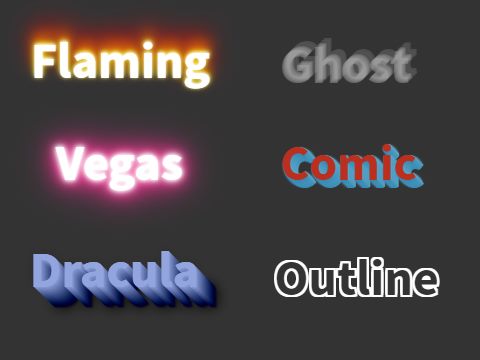


Just don’t ever try to wow an audience with bright graphics to make up for thin content.īitmap (or raster) images are composed of a fine grid of pixels (picture elements). Visual evidence can’t become persuasive if no one ever notices it. A serious interest in visual communication doesn’t require that you use only small, mousy graphics in pale colors. Trust your viewers enough to give them the data: let them look at the same higher-resolution images or ambiguous results that you saw and decide the issue for themselves.

If you are making a case with visual evidence, don’t process and edit your visuals so heavily that the audience has no choice but to accept your point of view. Distorting quantitative data isn’t just a failure to communicate it’s a betrayal of the reader’s trust. Take advantage of the web’s enormous capabilities to communicate complex color visuals without the expense of printing and physical distribution. The readers are the same as in print media, but the web has a different profile of strengths and weaknesses. Regular readers of web sites may once have been distinguishable from other publishing audiences, but now everyone reads the web. Don’t dumb down your material on the supposition that web users are somehow fundamentally different kinds of people from print readers and have no interest in complexity. Our advice on graphic communications is the same as on written communications: Integration: Graphics can combine words, numbers, and images in a comprehensive explanation.Ī chart or diagram is an implicit promise to the user that you’ll make a complex world easier to understand.Analysis and causality: Graphics can help take apart a topic or show what caused it.Quantitative data: Numeric charts can help explain financial, scientific, or other data.Diagrams: Quantitative graphics and process diagrams can explain concepts visually.
 Illustrations: Graphics can show you things, bringing pieces of the world into your document. Site-defining identity graphics do not need to be elaborate, but they do need to be consistent across the range of pages in a site for the user to establish a sense that your pages are a discrete region-related perhaps to a larger whole if you work in a major enterprise, but in some ways distinct as a “place.”Ĭontent images serve a number of purposes, complementary to text content: New tools have increased our ability to create information graphics, and the web provides a full-color multimedia forum unbounded by the costs of publishing and distributing paper.Ĭonsistent interface and identity graphics across a collection of web pages define the boundaries of a web “site.” Although web designers could build a site without images, most users would not readily recognize a collection of bare pages as a cohesive “site,” and such a site would seem unpleasantly odd, well outside of design norms and user expectations. Illustrations can convey complex quantitative or spatial information quickly, transcending language barriers, and can combine with text to complement many styles of information gathering and learning. Good diagrams and interesting illustrations are visually arresting and create documents that are distinct and memorable. Good design is clear thinking made visible. arender ( retries: int = 8, script: str = None, wait: float = 0.Web Style Guide by Patrick J. default_encoding – Which encoding to default to.Īll found links on page, in absolute form. html – HTML from which to base the parsing upon (optional). url – The URL from which the HTML originated, used for absolute_links. HTML ( *, session: Union = None, url: str = '', html: Union, default_encoding: str = 'utf-8', async_: bool = False ) ¶Īn HTML document, ready for parsing. These classes are the main interface to requests-html: class requests_html. Select an Element with a CSS Selector ( learn more):
Illustrations: Graphics can show you things, bringing pieces of the world into your document. Site-defining identity graphics do not need to be elaborate, but they do need to be consistent across the range of pages in a site for the user to establish a sense that your pages are a discrete region-related perhaps to a larger whole if you work in a major enterprise, but in some ways distinct as a “place.”Ĭontent images serve a number of purposes, complementary to text content: New tools have increased our ability to create information graphics, and the web provides a full-color multimedia forum unbounded by the costs of publishing and distributing paper.Ĭonsistent interface and identity graphics across a collection of web pages define the boundaries of a web “site.” Although web designers could build a site without images, most users would not readily recognize a collection of bare pages as a cohesive “site,” and such a site would seem unpleasantly odd, well outside of design norms and user expectations. Illustrations can convey complex quantitative or spatial information quickly, transcending language barriers, and can combine with text to complement many styles of information gathering and learning. Good diagrams and interesting illustrations are visually arresting and create documents that are distinct and memorable. Good design is clear thinking made visible. arender ( retries: int = 8, script: str = None, wait: float = 0.Web Style Guide by Patrick J. default_encoding – Which encoding to default to.Īll found links on page, in absolute form. html – HTML from which to base the parsing upon (optional). url – The URL from which the HTML originated, used for absolute_links. HTML ( *, session: Union = None, url: str = '', html: Union, default_encoding: str = 'utf-8', async_: bool = False ) ¶Īn HTML document, ready for parsing. These classes are the main interface to requests-html: class requests_html. Select an Element with a CSS Selector ( learn more):








 0 kommentar(er)
0 kommentar(er)
